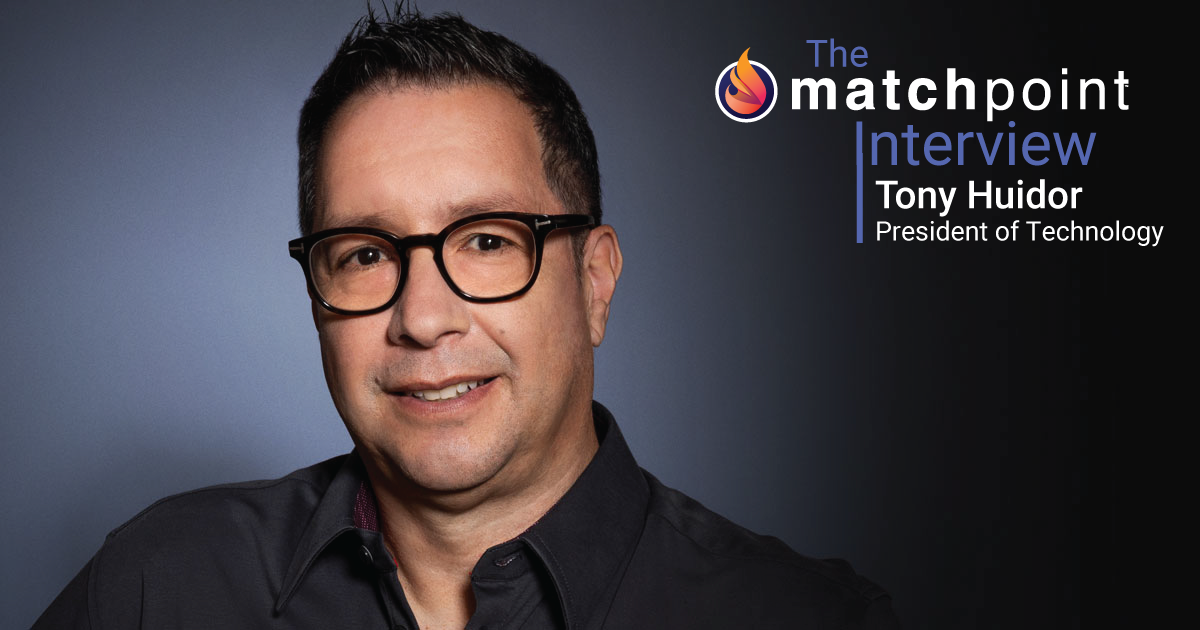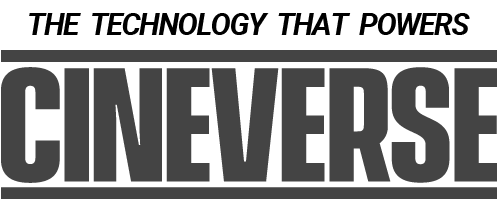The Matchpoint Interview with Tony Huidor

A few weeks ago, Cineverse announced the creation of their new Technology division run by Tony Huidor, an award-winning President of Technology and Chief Product Officer. Get a glimpse inside his career and find out what he thinks about the competition, and the future of content distribution.
“We’re a movie company, Tony. That’s not what we do.”
Tony Huidor heard that line more times than he can count during his 35-year career at the intersection of entertainment and technology. For more than two decades, his vision for using tech to simplify content distribution was ahead of its time, and it would take all that time for his ideas to become reality.
Ten years ago, Cineverse gave Tony the green light to create what no one else had ever imagined. With deep expertise in both product and operations, Tony has a unique superpower: he can take mind-bending complexity, abstract it, and automate it into something simple and scalable. The result? Matchpoint—a groundbreaking platform that fully automates digital content delivery from beginning to end.
We sat down with Tony to talk about his journey, his new role as President of Technology and Chief Product Officer at Cineverse, and how this tech will reshape the industry. Here are some highlights from our conversation.
What does it mean to you to be heading up technology at Matchpoint?
It feels like the culmination of everything I’ve been working toward for the past 25 years. It’s the most fun I’ve ever had, and easily the most exciting phase of my career.
Back in the late ’90s, when I was at Disney, I had lots of ideas for what digital content distribution could be. But the industry wasn’t ready. There was, and still is, a lot of complacency about how to do things. People would remind me: “We’re a movie company, not a tech company,” or, “You’re Ops, not IT, that’s not your job.” I’d build something, then have to walk away and hand it over to someone else to manage. I never got to take it all the way.
And now?
This time around, I created Matchpoint, and Cineverse let me take it all the way. It’s now a fully automated digital supply chain specifically for video distribution. Ingestion, QC, packaging, delivery are all handled through a simple, easy-to-use dashboard with minimal human intervention. There’s nothing else like it in the market, and the scale we’re able to achieve is staggering.
Give us an example.
Just last month, my Head of Ops told me we ingested and prepped 15,000 movies, and she didn’t realize it until she ran a report. Matchpoint did all the work automatically.
None of the major studios can come close to that. The leading service provider in the industry, the one all the big guys use, can only manage hundreds of titles a month, and they need hundreds of staff to do it. We can easily deliver 20,000 movies a month to any of the 125 platforms we support with a team of 15.
How does that compare to Cineverse pre-Matchpoint?
Ten years ago, before I got the idea to build Matchpoint, delivery was a brute-force, error-filled, expensive process. Cineverse (then Cinedigm) was delivering 30-50 movies a month on average and spending $1.4 million a year on vendors to do it. A lot of the processes we were using then are still widely in practice at media companies today.
With Matchpoint, it’s multiples less expensive, exponentially faster, and there’s no “fat-finger tax.”
Wait, fat-finger tax?
Yeah, human error. One wrong keystroke, especially around things like dates, can trigger serious failures, like a title being released too early. For major movie releases especially, accidentally releasing a movie at the wrong time can lead to substantial loss of revenue.
Most media distribution workflows are still largely dependent on human capital. During COVID, this became an even bigger vulnerability—a lot of operations just stopped.
How has Matchpoint changed things for employees at Cineverse?
For one, our people aren’t stuck in back rooms prepping and moving files. They’re able to focus on higher-level work—distribution strategy, customer innovation, business growth.
Ironically, the office feels more human now, there are more people around, and they’re more energized from doing work that moves the needle instead of constantly fighting fires just to keep the ball rolling.
What do the next five years look like for Matchpoint?
There will be substantial focus on AI. We’re already using it for anomaly detection in video, ad placement, and content recommendations as in cineSearch, our new advanced search solution – we call it “AI for your UI” – and it’s going to change the way users discover content.
Looking forward, we want to do things like generate new and more effective metadata, automated image creation, AI-assisted data analysis, and smarter ad decisioning systems. As a company, our vision is to lead the evolution of the entertainment industry through tech innovation.
What does this mean for the industry?
Frankly, most of our competitors aren’t set up to take advantage of modern technological advances. They don’t have the right foundation to build on, in other words, what Matchpoint provides us.
The good news is, Matchpoint is no longer building solutions just for Cineverse, under this new organization we’re focused on leveraging what we have built and utilizing it to help other media companies with scaling their businesses. If you’re a content owner, streamer, or Smart TV platform, Matchpoint can provide the same seamless, error-free scalability that’s been hardened and proven on one of the industry’s largest content libraries.
Matchpoint is determined to pull digital content distribution into the 21st Century, and I am personally inviting everyone to join us. Trust me, the future of entertainment is even brighter than you can imagine.
MATCHPOINT SPARK BLOG
